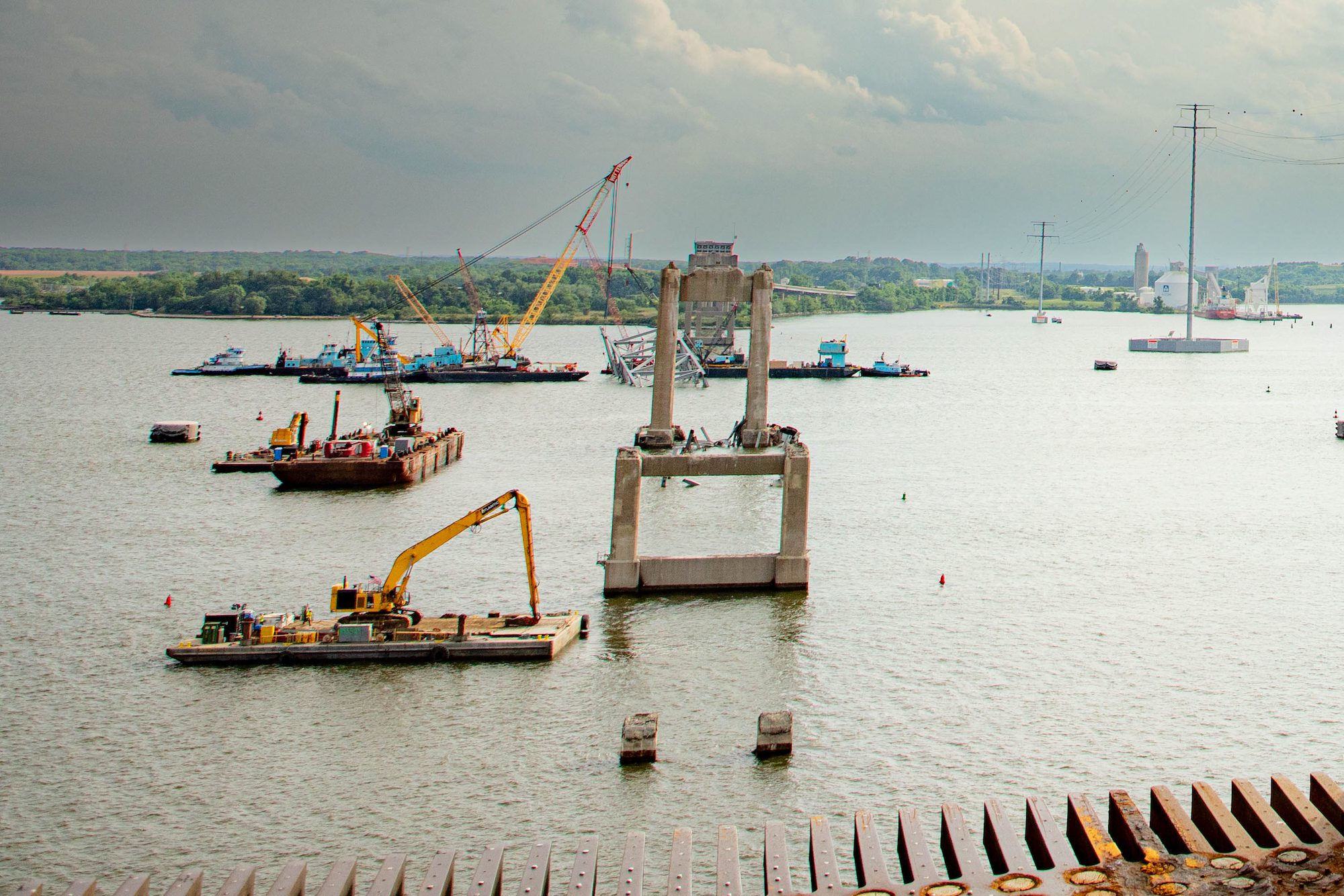Maersk Charters Newbuild for Record $150,000 Per Day
By Martina Li in Taiwan (The Loadstar) – As liner operators become desperate for ships, charter rates have hit the $150,000/day mark. Maersk Line has agreed to pay this to charter...


Salvors continue working to clear the Francis Scott Key Bridge wreckage, May 23, 2024, in an effort to reopen the full 700 ft wide Fort McHenry Federal Channel. U.S. Army Corps of Engineers photo by Christopher Rosario
The Port of Baltimore has officially reopened and resumed operations at full capacity, marking a major milestone in the massive cleanup effort after the M/V Dali struck the Francis Scott Key Bridge on March 26, causing it to collapse.
The U.S. Coast Guard Captain of the Port (COTP) has now officially reopened the Fort McHenry Channel to commercial vessel traffic for 24-hour availability without restrictions.
Supply chain visibility platform Project44 has provided some insights into current port operations and the impacts resulting from the extended closure. Their data revealed that vessel berthing times significantly decreased after the Federal Channel was partially reopened on May 20 following the refloating and removal of the Dali. While export dwell times at the Port of Baltimore remain high due to clearing the backlog of containers, import container dwell and vessel berthing times are now stable, indicating healthy labor force and operations at the port, according to Project44.


During the closure, many containers that were initially destined for the Port of Baltimore were redirected to other ports. Project44’s analysis shows that the ports that received the most volume were New York (46%), Norfolk (20%), and Newark-Elizabeth (9%). The data shows that dwell times at these ports have remained stable, however, the rerouted containers experienced higher dwell rates due to bottlenecks in finding drayage coverage for out of network transit lanes.
The extended dwell times also resulted in demurrage charges, which are fees levied by ports when containers remain at the port for an extended period. The estimated demurrage costs due to the crash could be as high as $85 million, according to Project44. However, as containers are no longer rerouting around Baltimore, further demurrage costs are not expected.
Join the gCaptain Club for curated content, insider opinions, and vibrant community discussions.


Join the 107,101 members that receive our newsletter.
Have a news tip? Let us know.
Access exclusive insights, engage in vibrant discussions, and gain perspectives from our CEO.
Sign Up




Maritime and offshore news trusted by our 107,101 members delivered daily straight to your inbox.



Essential news coupled with the finest maritime content sourced from across the globe.
Sign Up